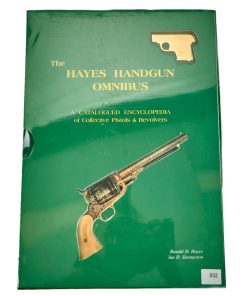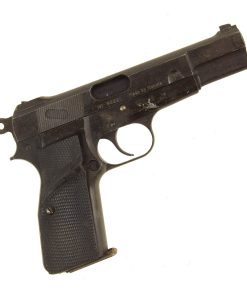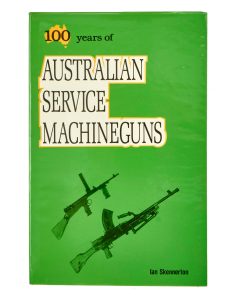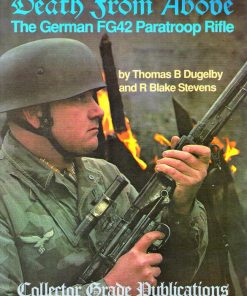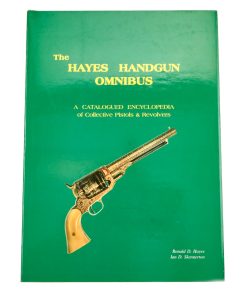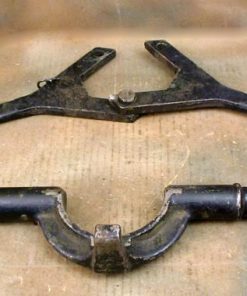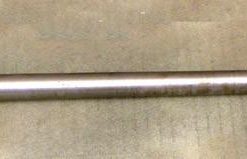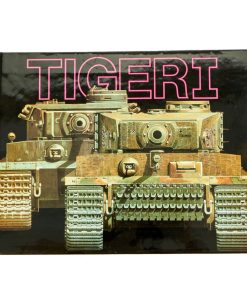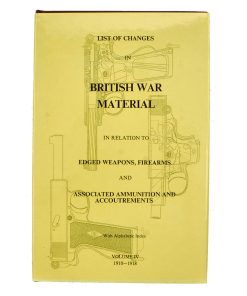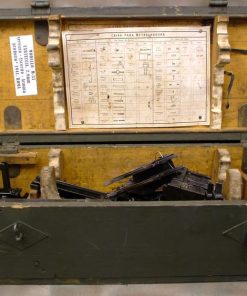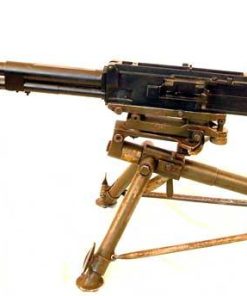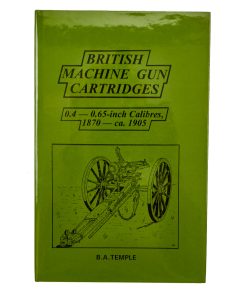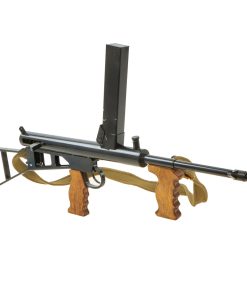Original German WWII 5cm Mortar Round Leichter Granatwerfer 36 Transportation Box Case with 5 Inert Rounds Original Items
$ 995,00 $ 248,75
Original Item: Only One Available. This is a lovely totally genuine 5cm mortar round steel transportation case for the 5 cm Leichter Granatwerfer 36 (light grenade launcher). The rounds it carried are High Explosive anti personnel bombs with a finned tail, of 8 blades, that would carry the cartridge. The bodies are manufactured from 4mm thick mild steel, with a screw threaded fuze hole that would accept a quick acting aluminum or Bakelite Wgr. Z. 38 nose fuse. The body would have contained a bursting charge of TNT, of approximately 4 1/2 ounces in weight. Muzzle velocity was 246 feet-per-second with a range of 55-558 yards.
The bombs would be transported in this a specially designed steel transit case with capacity of 10 bombs. Box measures 12″ x 9″ x 5″.
The mortar case is offered in good condition and shows signs of age and rust. It is now painted what looks to be Luftwaffe gray, but we believe this may have been done post war. On the interior all of the original spacers and pads are present, and the locking mechanisms that hold the tails of the rounds in place are both fully functional, top and bottom. Included with are FIVE inert 5cm mortar rounds with bakelite fuses, which vary in condition.
Due to the inert mortar rounds included in the box, though they are BATF compliant, this set is not available for export.
Comes ready to display!
The 5 cm Leichter Granatwerfer 36 (lighter grenade launcher), is a German 5cm light mortar that saw service in early World War II. Also known by the designation 5 cm leGrW 36, it was developed by Rheinmetall-Borsig and put into service in 1936. As with most small caliber mortars, it was intended as a long range grenade launcher, having greater accuracy than rifle-launched grenades. It was used to attack small targets that were beyond the range of a thrown hand grenade. It was lightweight and easily transported, making it a great option for increasing the range and firepower of infantry.
However, as with many early-war German weapons, it was somewhat over-engineered. As originally issued, it came with a complex optical sight, which was done away with in 1938. Production was then stopped in 1941, due to the 5 cm leGrW 36 being too small for the intended role. The shells it fired were not powerful enough, and the range was limited. After this it was used mainly by second line troops until the end of the war.
Fast Shipping with Professional Packaging
Thanks to our longstanding association with UPS FedEx DHL, and other major international carriers, we are able to provide a range of shipping options. Our warehouse staff is expertly trained and will wrap your products according to our exact and precise specifications. Prior to shipping, your goods will be thoroughly examined and securely secured. We ship to thousands clients each day across multiple countries. This shows how we're dedicated to be the largest retailer on the internet. Warehouses and distribution centres can be located throughout Europe as well as the USA.
Note: Orders with more than one item will be assigned a processing date depending on the item.
Before shipping before shipping, we'll conduct a thorough inspection of the items you have ordered. Today, the majority of orders will be delivered within 48 hours. The delivery time will be between 3-7 days.
Returns
The stock is dynamic and we cannot completely manage it because multiple stakeholders are involved, including our factory and warehouse. So the actual stock may alter at any time. It's possible that you may not receive your order once the order has been made.
Our policy is valid for a period of 30 days. If you don't receive the product within 30 days, we are not able to issue a refund or an exchange.
You can only return an item if it is unused and in the same state as the day you received it. You must have the item in its original packaging.
Related products
Uncategorized
Uncategorized
Band of Brothers ORIGINAL GERMAN WWII Le. F.H. 18 10.5cm ARTILLERY PIECE Original Items
Uncategorized
Australian WWII Owen MK1 Machine Carbine SMG Custom Fabricated Replica with Sling Original Items
Uncategorized
Uncategorized
Uncategorized
Angolan Rebel 1970s era 60mm Inert Display Mortar from Angolan Civil War Original Items
Uncategorized
Uncategorized
Uncategorized
Uncategorized
Uncategorized
Uncategorized
Uncategorized
Uncategorized
Australian WWII Owen MK1 Machine Carbine SMG Custom Fabricated Replica with Sling Original Items






















